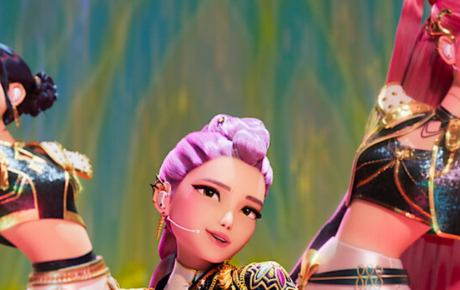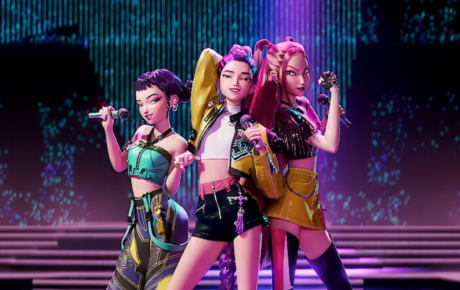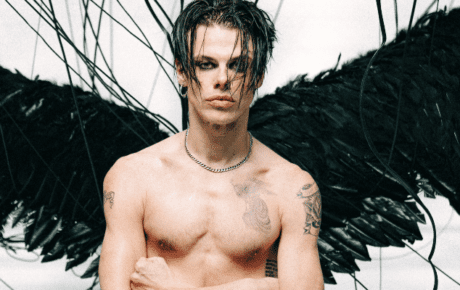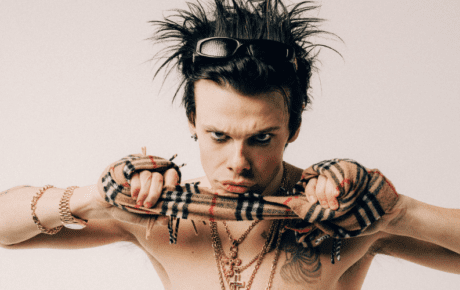In all its kaleidoscopic, dreamy and all-round-fantastic glory, K-pop has quickly become one of the biggest forces of not only the music industry but pop culture itself. And it’s not hard to see why. The magic of K-pop sees it strip music, art and fashion right down to its bones, reinstating the idea that it all can transcend language and still become a global success. As K-pop groups keep emerging, and icons such as BTS and BLACKPINK only continue to rise and rise, it’s time (if you haven’t already) to understand what all the hype is all about.
Here’s everything you need to know about the new phenomenon that’s taking over the world.
What is K-pop?
Short for Korean pop, K-pop represents South Korea’s popular musical landscape and has come to be known as a distinct sound that blends together genres of music from all over the world. The fascination with the genre stems from Hallyu, which translates to the Korean Wave; the idea that since the 1990s, Korean culture has grown globally (more specifically in the West) in the forms of beauty, fashion, TV and film and other media and, obviously, music.
But of course, K-pop is more than just the music. In fact, Hallyu is so popular because every element of the wave blends together. K-pop and film stars are often the ones pushing out Korean beauty products and, as we’ve seen, K-pop music videos are a film within themselves (not to mention, at the forefront fashion trends). All of this only adds to K-pop’s intrigue. From bright and colourful costumes to perfectly choreographed dance moves, there is really no other genre like it. It’s both predictable and yet completely unpredictable at the same time, catering to fans of any kind of music and usually incorporating several different languages in the same song.
Although officially popping up in the 90s, K-pop didn’t really gain traction until the 2000s. And it wasn’t until Psy stepped onto the scene in 2012 with his viral hit ‘Gangnam Style’ (which would surpass Justin Bieber’s ‘Baby’ as the most-watched video on YouTube) and Glee’s K-pop episode in the same year, that K-pop as whole fully stepped into the mainstream.
In came then the next (and current) wave of K-pop stars. While Psy’s foray certainly opened up the world, it was often criticised by other K-pop stars as being too gimmicky and not entirely representative of K-pop music and artists. To try and shift the Western belief of what we all thought K-pop to be (a comical, over-the-top viral meme), new artists started to emerge and take over the genre. Two of which would then become two of the biggest bands on the planet: BTS and BLACKPINK.
Characteristics of K-pop
When listening to third-wave K-pop stars (2013 – present), it’s clear to see defining elements that make up its growing identity. While each artist is different, they all blend together different musical genres and often languages. Incorporating Western music such as pop, electronic and punk and African American folk, jazz, hip-hop (it’s common to have one member who is primarily a rapper), R&B and disco, the K-pop sound is typically just a mixture of everything you’ve ever heard before.
The same goes for languages. While Korean is the most prominent, Chinese, Japanese, English and even Spanish can slip in from track to track. Further proving the idea that music transcends language, fans from all over the world can either get glimpses of their native language in K-pop or simply just hum along to the catchy tune. It’s a clever tactic to increase their spread around the world, making their sound accessible to anyone in any market, especially the West. Collaborations with English-speaking stars are also incredibly popular, with Lady Gaga, Halsey, Nicki Minaj and Snoop Dogg (to name a few) featuring on K-pop tracks and/or working with K-pop artists.
Another characteristic, and arguably the most important, is the synchronised, eye-catching dancing. Perfectly in-time with one another, and wrapped in probably the most talent you’ve seen from anyone, the choreography of K-pop members is certainly their edge. Their moves take inspiration from everything between traditional breakdancing and contemporary dance and are such a staple to their sound that their music videos and live performances get more numbers than their audio streams.
K-pop idols
More commonly, the dance culture of K-pop is wrapped around the idea of a K-pop idol, an artist that exists in the mainstream and acts as a role model and influence on younger fans. Think the Disney stars of the K-pop world. Like the Western world, these artists are often marketed in a certain way and prepped and groomed to be a blueprint of a certain idea. And just like Western girl and boy bands, each K-pop idol falls into a certain role. In most cases, there’ll be a clear visual member, one who is by far the most attractive (but of course this is subjective to fans), one who primarily raps (and in some cases is also the only member to speak fluent English), the ‘leader,’ the one who is often seen as the face of the group and acts as the spokesperson (sometimes this can overlap as the leader is often the member who speaks the best English), the lead dancers (the stars of the videos and often the ones who make up the moves), and the maknae and hyung, which are Korean for both the junior (maknae) and senior (hyung) members of the group (they’re often referred to these as a nickname).
To be a K-pop idol is more than just being attractive though. Having such a huge platform comes with huge responsibility, and K-pop stars choose to spread positivity as much as they can. Aside from lyrical messages of being and loving yourself, chasing your dreams and having fun, K-pop idols are encouraged to donate to charities, represent helpful organisations and essentially work to make the world a better place. And it’s not so much a pipe dream. K-pop stans are the biggest fans on the planet, banding together to make incredible change in the name of their favourite K-pop idols. After BTS contributed $1 million USD to Black Lives Matter in June, their Army matched their donation within 24 hours. Not to mention their incredible plan of tanking the Trump rally in Tulsa a few weeks ago.
So why is K-pop so popular?
Like most viral music happenstances, it was a factor of right place, right time. BTS came in fresh off the heels of One Direction, the biggest band in the world for 5 years and the pioneers of social media fan interaction. In 2015, when One Direction fizzled out, BTS (who had been around officially since 2013 but only started gaining mainstream success years later) filled the desire for the next generation’s biggest boy band. It didn’t matter so much that they were a K-pop group, only the fact that they were going to be as big, if not bigger, than the icons before them.
For BLACKPINK, the mainstream of BTS certainly helped. With K-pop in the picture, and doing better than most Western artists, more and more K-pop groups started to form. And while many are successful, none have achieved the same level of success as BLACKPINK. Being the first K-pop girl group in seven years out of the same label that housed Psy, there was a need to have a female force that matched BTS in aesthetics and popularity. And it’s precisely their hip hop influenced music and trendy Korean fashion that have made them some of the biggest female pop stars in the world right now.
A huge factor of the popularity of K-pop is social media. K-pop groups are encouraged to use social media to interact with their fans and spread their reach, with no platform being off limits (although, Instagram is the preferred one). With live videos, funny behind-the-scenes shots, selfies and model-esque fashion shoots, following a K-pop idol on social media is a hobby of its own. Not to mention their use of YouTube with teaser videos, beautiful music videos and remixes and alternate videos of multiple songs.
The power of K-pop stans is what keeps K-pop afloat, and it’s through social media that they stay alive. Twitter is the most common platform for fans to link up and connect, spreading news and sharing everything they love about their idols. BTS’ ‘golden maknae’ Jungkook currently holds the record for being the only individual on Twitter to have over 2 million likes on 7 different tweets, one of which (a video of him singing) became the fastest tweet by any Korean artist to reach 2 million likes.
Never Not 💜 pic.twitter.com/Ag9oUTJvrN
— 방탄소년단 (@BTS_twt) May 2, 2020
Currently, the official BTS Twitter and Instagram both have around 27 million followers. The boys don’t have their own individual accounts and instead post through the main channel, which is the opposite for BLACKPINK. While the official BLACKPINK Instagram has 25 million followers, the four members each have their own significant following (24, 26 and 29 million) with Lisa (the maknae) currently holding the title as the most followed K-pop idol on Instagram (35 million followers). BTS currently have 32 million subscribers on YouTube and BLACKPINK have a whopping 41 million.
https://www.instagram.com/p/CBcfHB0jo83/
There are many layers that make up the wonder that is K-pop, but perhaps what makes it the most popular is its intrigue. Being a fan of K-pop is always anticipating what aesthetic your idols will develop next; what the next video is going to look like and what the next single is going to sound like. Everything is always prepped to be better than the last, and when your entire discography is pretty damn good, it makes for an exciting journey.
While we’ve seen our favourite Western pop stars always in the limelight, it’s refreshing to burst our little bubble and step into a whole new world. K-pop is a trailblazer for many different things, but most importantly it’s changing the way we devour music. At its core, K-pop just wants to connect everyone together. No matter who you are, or where you are in the world, music is music, and it demands to be heard and felt.
SEE ALSO: BLACKPINK General Knowledge Quiz












